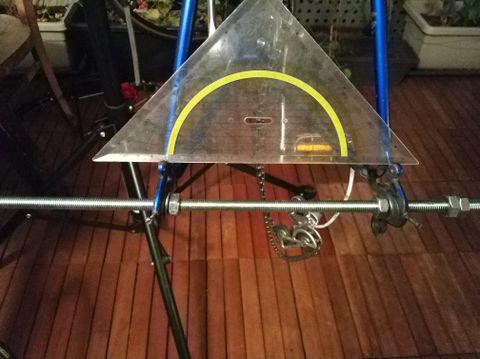Cold Setting a Steel Frame
Part of my efforts to improve the rideability of my Freddie Grubb Tourmalet involved installing modern wheels. There were two main issues:
- Diameter of the wheels: the frame was built for 27.5" wheels and I was trying to install 28" wheels
- The space between the rear dropouts and the width of the hub
The Tourmalet frame, it's built with Reynolds 531 tubes, had a spacing of 120 mm but the Mavic Aksium wheel I had laying around have a 130 mm wide hub.
Sheldon Brown suggests to use a wooden beam as lever for spreading the frame. I was afraid to apply this technique because I feared I might end up with an asymmetric frame. After a bit of YouTube research I decided to use a threaded 10mm bolt, a pair of washers and some screw nuts to widen the space between the two rear triangles.
First I removed the rear wheel, derailleur, fender and rack. Next I put a clamp on the seat stays to secure the soldering at the bridge.
Then I screwed two nuts and washers on the bolt with a distance of approx. 100 mm between them and additional two nuts, locking each other, at the end of the bolt. I placed the the bolts with washers inside the dropouts and used a wrench on one of the nuts to expand the rear triangle. The two locking nuts can be fixated with another wrench to keep the bolt from rotating with the nut you're screwing apart.

I started with expanding it to 150 mm, then loosened the nuts again and measured. There was no measurable effect. So I tried again, forcing the spacing to 160 mm, again no effect. In the end I had to spread the rear triangles to over 180 mm so they stayed at 130mm after removing the bolt.
I was really astonished at how much force has to be applied in order to cause a permanent deflection of the delicate seat and chain stays. Not sure if this due to the high-tensile Reynolds tubes or if this can also be observed with lower quality frames.
Feedback
If you have feedback, questions, or want to comment on this, please send me an e-mail or contact me through any other channel.